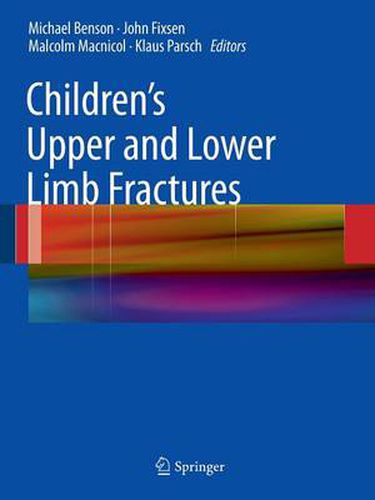Readings Newsletter
Become a Readings Member to make your shopping experience even easier.
Sign in or sign up for free!
You’re not far away from qualifying for FREE standard shipping within Australia
You’ve qualified for FREE standard shipping within Australia
The cart is loading…






This title is printed to order. This book may have been self-published. If so, we cannot guarantee the quality of the content. In the main most books will have gone through the editing process however some may not. We therefore suggest that you be aware of this before ordering this book. If in doubt check either the author or publisher’s details as we are unable to accept any returns unless they are faulty. Please contact us if you have any questions.
This book starts appropriately in considering the principles which should govern our care of the injured child and the background factors which influence fracture epidemiology. Knowing how to manage the multiply injured child and recognizing the one who has been non-accidentally injured are essential skills in our specialty. Injuries to the growth plate are not always easy to recognize and manage but, if we fail to do so, the long-term consequences may be serious. Succeeding chapters describe childhood injuries and fractures regionally. Conservative fracture management has not been forgotten amidst the plethora of newer methods of surgical fixation.
$9.00 standard shipping within Australia
FREE standard shipping within Australia for orders over $100.00
Express & International shipping calculated at checkout
This title is printed to order. This book may have been self-published. If so, we cannot guarantee the quality of the content. In the main most books will have gone through the editing process however some may not. We therefore suggest that you be aware of this before ordering this book. If in doubt check either the author or publisher’s details as we are unable to accept any returns unless they are faulty. Please contact us if you have any questions.
This book starts appropriately in considering the principles which should govern our care of the injured child and the background factors which influence fracture epidemiology. Knowing how to manage the multiply injured child and recognizing the one who has been non-accidentally injured are essential skills in our specialty. Injuries to the growth plate are not always easy to recognize and manage but, if we fail to do so, the long-term consequences may be serious. Succeeding chapters describe childhood injuries and fractures regionally. Conservative fracture management has not been forgotten amidst the plethora of newer methods of surgical fixation.